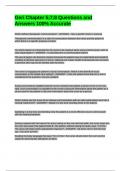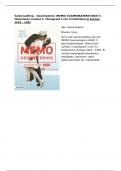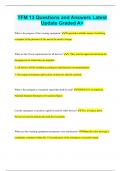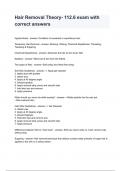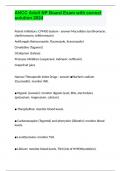Tentamen (uitwerkingen)
Geri Chapter 5;7;8 Questions and Answers 100% Accurate
- Vak
- Instelling
Geri Chapter 5;7;8 Questions and Answers 100% AccurateGeri Chapter 5;7;8 Questions and Answers 100% AccurateGeri Chapter 5;7;8 Questions and Answers 100% AccurateGeri Chapter 5;7;8 Questions and Answers 100% AccurateGeri Chapter 5;7;8 Questions and Answers 100% AccurateWhich defines therapeutic com...
[Meer zien]
